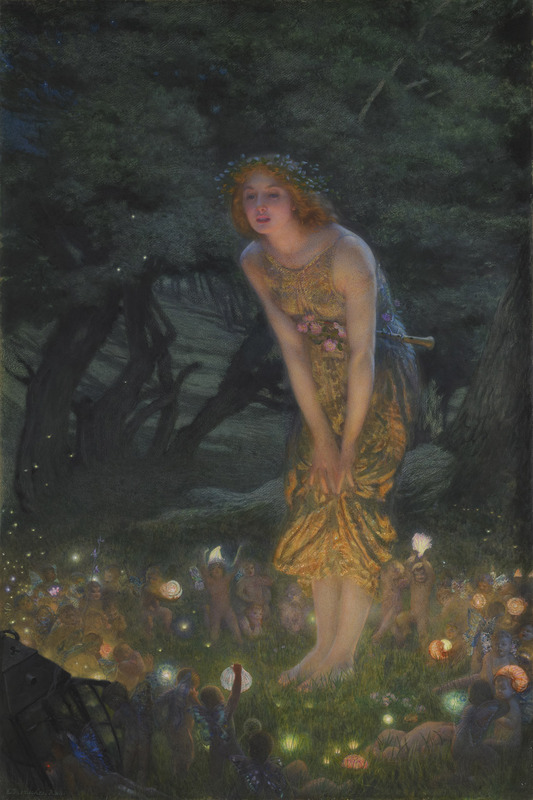
“And I serve the fairy queen,
To dew her orbs upon the green.” –A Midsummer Night’s Dream
A few weeks ago I was asked about some mushrooms in a field near work. Not about what kind of mushrooms they were, or if they were edible, but why they were growing in a circle.
The answer is steeped in folklore and depicted in many classic artworks. What my coworkers saw is a fairy ring.

Various mythoi of fairy rings can be found in cultures from around the world. In the Philippines they are associated with spirits, while Dutch superstitions claim that the rings are left by the imprint of the Devil’s milk churn. In many European legends, however, the rings of mushrooms are associated with, as the name suggests, fairies.
According to folklore, the rings are left by fairies dancing in the night. If you happen to break the ring, the fairies will visit all kinds of woe upon you; from making you dance with them until you die, to having your eyes gouged out, to simply being whisked away to the fairy realm.

Because of these tales of fantasy, fairy rings were the focus of many paintings in the Victorian Age. They were also used by popular authors of the times, mentioned by William Shakespeare in both “A Midsummer Night’s Dream” and “The Tempest.” Alfred Lord Tennyson, Yeats, and Elizabeth Barrett Browning used Fairy Rings in their poetry, and W.H. Cummings composed a cantata entitled “The Fairy Ring.” In addition to all of these written works, fairy rings (and fairies in general) were a popular subject for paintings even into the early 20th century.

All these flights of fancy aside, the rings do have a scientific basis.
What many people don’t know about mushrooms is that they are not the whole organism. A mushroom is not like a flowering plant, but more like the flower on a plant. They are the fungus’s fruiting body, and the rest of the fungus is hidden underground.

You see, fungi vegetate by a filamentous mass called a mycelium. This mass of intertwining branches grows outward from wherever the initial fungal spore takes hold. When presented with a steady and readily available source of nutrients, the mycelia grow out in an even pattern (Can you guess what shape that makes?) And whenever the conditions are right for the particular species of fungus, it sprouts up its fruiting body, the mushroom, along the end regions of the mycelium. While the mushroom is the easiest way to notice a fairy ring, you can often see them even when their mushrooms are not visible. As the mycelium grows through the soil, it breaks down and uses nutrients. As the fungus uses those nutrients the grasses along its leading edge suffer. However, the nutrients that aren’t taken up by the fungus remain in the soil and are easily taken up by the roots of grasses just behind the fungal boundary. This grass grows faster and is a dark a nutrient heavy green that can be easily differentiated from the neighboring grasses, creating a fairy ring of grass in its own right.
So, a fairy ring is quite simply the leading edge of a healthy fungal bloom. Generally identified by a ring of mushrooms, but even visible with just rings of grass utilizing the fungally prepared soil.


